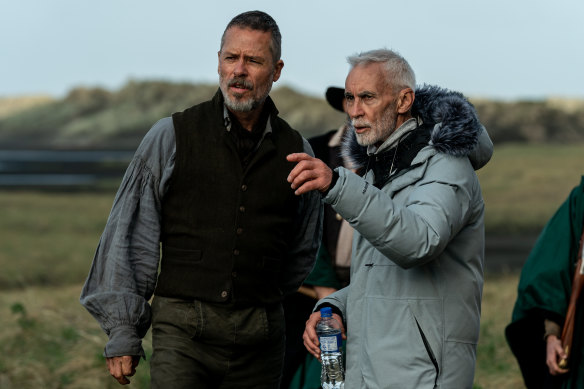THE CONVERT ★★★★
(MA) 119 minutes
- Advertisement -
It’s 1830 and lay preacher Thomas Munro (Guy Pearce) is about to join a cluster of British settlers who have made a precarious home for themselves on a stretch of land on the west coast of New Zealand’s South Island. It looks like a place fit only for the brave, desperate or crazily optimistic, and Munro is a bit of all three.
Tioreore Ngatai-Melbourne as Rangimai and Guy Pearce as Thomas Munro in The Convert.Credit: Kismet
He’s out to relieve his guilt over those he killed as a soldier in the British army by devoting the rest of his life to good works. But it’s already very clear things aren’t going to play out as planned. His ship is greeted by a storm, and before he gets the chance to meet his new parishioners he’s in the middle of a skirmish between two warring Maori tribes.
- Advertisement -
The parishioners, too, turn out to be a disappointment, having come equipped with a sanctimonious sense of their superiority. Even though they pay rent for the land, they predictably regard their Maori landlords as savages, and when Munro asks the settlement’s doctor to treat the wounded Maori princess he has rescued from the fight, he refuses.
It’s up to Jacqueline McKenzie, cast as another dissident spirit, to help. Charlotte Hegarty is a healer who’s been transported to the colonies on a charge of petty theft, and although McKenzie seems a little too classy for the role of a convict she brings a credible Scottish accent to the job, along with a gravitas to match Munro’s. They make an attractive, if earnest, pair.

Lee Tamahori on the set of The Convert with leading man Guy Pearce.Credit: Kismet
- Advertisement -
The film is the latest chapter in the Maori chronicles director Lee Tamahori began 30 years ago with the brutal domestic drama Once Were Warriors. Mahana (also known as The Patriarch), a story about a family feud in the 1950s, came along in 2016.
For The Convert he’s adapted Wulf, a novel based on the diaries of two young English sailors on a trading vessel, to put the other chapters in context. The film takes us back to the very beginnings of Maori contact with white society. Munro has arrived aboard a ship bringing muskets to sell to the tribes, which makes the pakeha complicit in the tribal warfare’s rapid expansion and acceleration.
In capturing the visual impact of the Maori customs, character and traditions, Tamahori established himself as a powerhouse long ago, and this film proves he hasn’t lost his touch. There is no doubting the authority of the tribal chieftains. It’s etched as strongly in their voices and their bearing as in their tattoos. They are unequivocal in declaring the vengeful philosophy that governs relations with their tribal rivals, and the battle scenes are raw and vicious.





